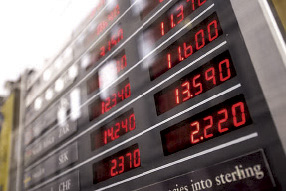 Naturally, many are concerned to learn the Belarusian Rouble’s final exchange rate. The Dean of the Belarusian State University’s Economic Department, Mikhail Kovalev, explains, “Demand and supply are now being balanced and, I think, a rate will be established of no more than Br14-15,000 per Dollar.” He believes that the unpopular measure of introducing tax on foreign currency trading has proven efficient in ‘extinguishing’ a storm on banks. National Bank’s statistics show that, from January 1st-5th, 2015, Belarusians sold $35.4m of foreign currency (Dollars).
Naturally, many are concerned to learn the Belarusian Rouble’s final exchange rate. The Dean of the Belarusian State University’s Economic Department, Mikhail Kovalev, explains, “Demand and supply are now being balanced and, I think, a rate will be established of no more than Br14-15,000 per Dollar.” He believes that the unpopular measure of introducing tax on foreign currency trading has proven efficient in ‘extinguishing’ a storm on banks. National Bank’s statistics show that, from January 1st-5th, 2015, Belarusians sold $35.4m of foreign currency (Dollars).
“The foreign currency panic, which began in late December, has ceased; there has been no full conversion of Rouble deposits into foreign currency deposits,” notes Mr. Kovalev. “I believe that the National Bank has acted truly professionally under these circumstances: on the one hand, it has brought exchange rates closer (slightly weakening the Belarusian Rouble) while insistently and consistently cutting the currency tax.”
He is convinced that it’s too early to fully lift all the measures introduced by the Government and the National Bank. Exporters now need to sell 50 percent, rather than 30 percent of their currency; in fact, Mr. Kovalev would like to see them sell all their foreign currency, to keep a stable exchange rate. At the moment, they seem interested in making it weaker. However, if they need to buy currency to purchase components or materials, they are better served by a stable rate, rather than one that’s flexible.” He adds that 100 percent currency selling is normal in many liberal global economies, including Chile and China. Under such circumstances, local central banks have no trouble in ensuring a stable rate.
MT’S REFERENCE:
In line with the National Bank’s decision, on January 9th, the refinancing rate rose by 5 percent points, reaching 25 percent per annum. Additionally, the top upper level for interest rates on legal entities’ deposits was reduced from 50 to 40 percent per annum while remaining unchanged (at 50 percent) for individuals’ deposits. However, the latter will be cut as soon as the situation stabilises.
By Alexander Benkovsky











